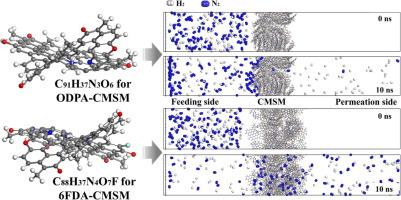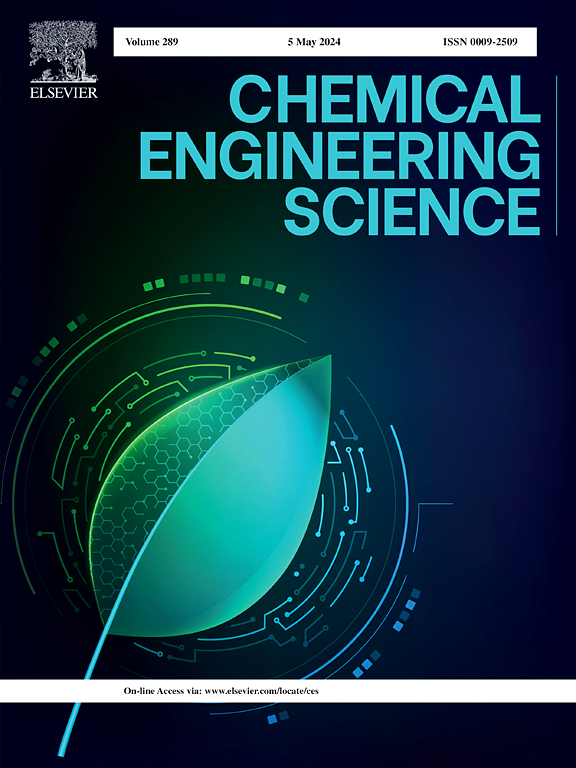Sub-nanoconfined selective transport and competitive permeation behaviors in carbon molecular sieve membranes for gas separation
IF 4.1
2区 工程技术
Q2 ENGINEERING, CHEMICAL
引用次数: 0
Abstract
Carbon molecular sieve membranes (CMSMs) derived from finely-engineered polymeric precursor are promising for gas separations. However, the microstructure-determined gas transport characteristics and separation mechanism within CMSM systems remain unclear. Herein, we investigate the sub-nanoconfined selective transport and competitive permeation behaviors of precursor-regulated CMSMs for H2/N2 separation, using a combination of experimental analyses, modeling, and nonequilibrium molecular dynamics simulations. Results indicate that the faster permeation of small-sized H2 molecule through CMSMs, compared to N2 molecule, is attributable to its larger permeable pore volume and higher connectivity of the pore-channels within the bulk membrane. Despite the distinct difference in preferred adsorption locations within CMSMs with different microporous natures, the aggregation of adsorbed N2 molecules will hinder the transport of H2 molecules through the membranes, resulting in competitive permeation. The valuable insights into the gas transport behavior and mechanism presented here will benefit the development of next-generation CMSMs for efficient gas separations.


求助全文
约1分钟内获得全文
求助全文
来源期刊

Chemical Engineering Science
工程技术-工程:化工
CiteScore
7.50
自引率
8.50%
发文量
1025
审稿时长
50 days
期刊介绍:
Chemical engineering enables the transformation of natural resources and energy into useful products for society. It draws on and applies natural sciences, mathematics and economics, and has developed fundamental engineering science that underpins the discipline.
Chemical Engineering Science (CES) has been publishing papers on the fundamentals of chemical engineering since 1951. CES is the platform where the most significant advances in the discipline have ever since been published. Chemical Engineering Science has accompanied and sustained chemical engineering through its development into the vibrant and broad scientific discipline it is today.
 求助内容:
求助内容: 应助结果提醒方式:
应助结果提醒方式:


